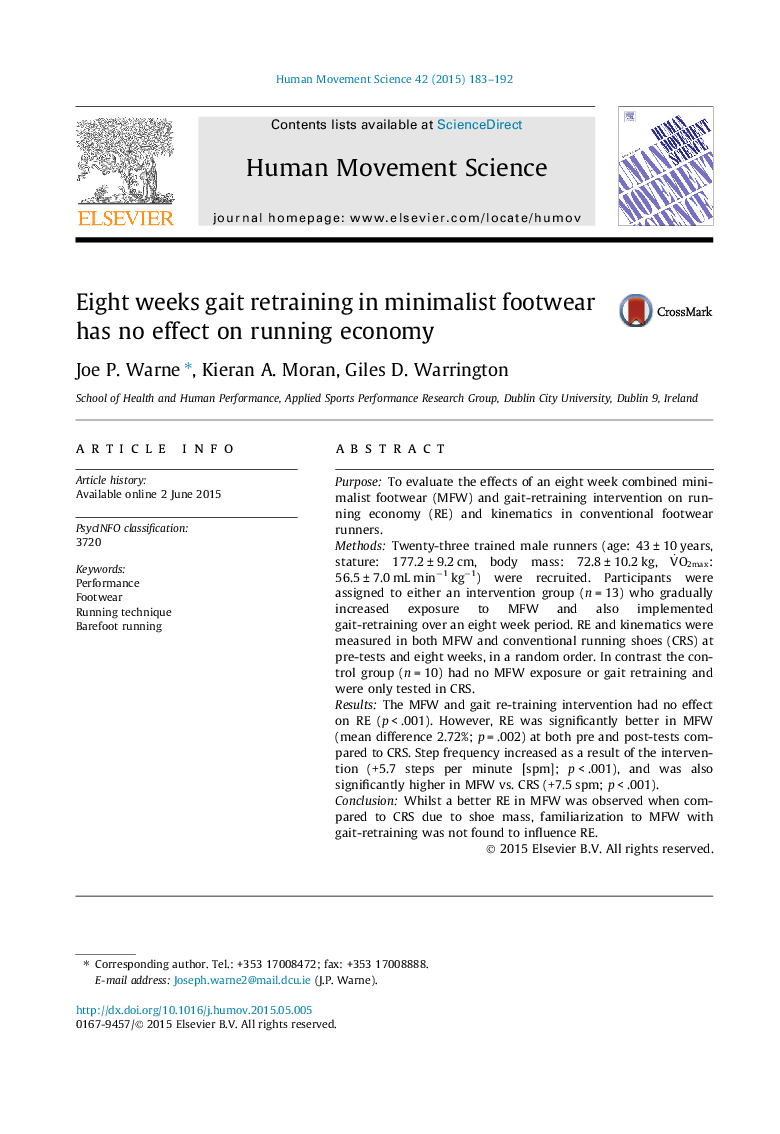| Article ID | Journal | Published Year | Pages | File Type |
|---|---|---|---|---|
| 928239 | Human Movement Science | 2015 | 10 Pages |
•Running economy is not influenced by an eight week minimal footwear and gait retraining intervention.•Running economy is better in minimal footwear compared to conventional running shoes.•Stride frequency is increased as a result of the minimal footwear and gait retraining intervention.•Stride frequency is higher in minimal footwear compared to conventional running shoes.•There is a higher tendency to non-rearfoot strike as a result of this intervention.
PurposeTo evaluate the effects of an eight week combined minimalist footwear (MFW) and gait-retraining intervention on running economy (RE) and kinematics in conventional footwear runners.MethodsTwenty-three trained male runners (age: 43 ± 10 years, stature: 177.2 ± 9.2 cm, body mass: 72.8 ± 10.2 kg, V̇O2max: 56.5 ± 7.0 mL min−1 kg−1) were recruited. Participants were assigned to either an intervention group (n = 13) who gradually increased exposure to MFW and also implemented gait-retraining over an eight week period. RE and kinematics were measured in both MFW and conventional running shoes (CRS) at pre-tests and eight weeks, in a random order. In contrast the control group (n = 10) had no MFW exposure or gait retraining and were only tested in CRS.ResultsThe MFW and gait re-training intervention had no effect on RE (p < .001). However, RE was significantly better in MFW (mean difference 2.72%; p = .002) at both pre and post-tests compared to CRS. Step frequency increased as a result of the intervention (+5.7 steps per minute [spm]; p < .001), and was also significantly higher in MFW vs. CRS (+7.5 spm; p < .001).ConclusionWhilst a better RE in MFW was observed when compared to CRS due to shoe mass, familiarization to MFW with gait-retraining was not found to influence RE.
